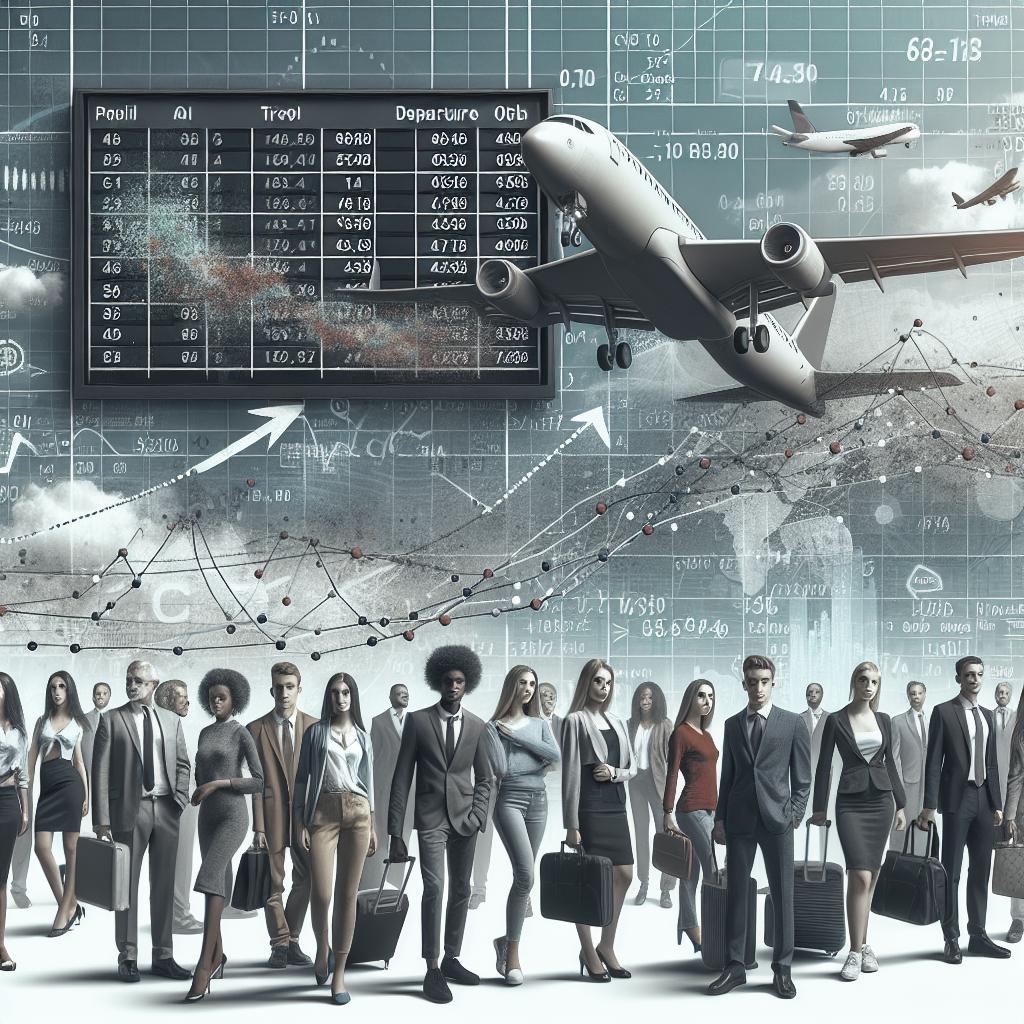How Does Airline Ticket Pricing Work?
Airline ticket pricing is a complex and dynamic process influenced by a multitude of factors. In this article, we delve into the intricate mechanisms that airlines use to determine the cost of a ticket. From operating costs, fuel prices, aircraft type, and route demand, to more nuanced aspects like seat inventory management and economic conditions, each variable plays a crucial role in shaping the final price. This comprehensive look aims to demystify the pricing strategies employed by airlines to maximize revenue and remain competitive. Whether it’s understanding the impact of global events or the subtle influence of environmental regulations, this exploration offers insights into the diverse components that impact how much you pay for a ticket.
Summary
Airline ticket pricing is dictated by a multitude of intertwined factors that work together to ensure both profitability and competitive fares. Understanding the interplay of these elements provides insight into why prices can vary dramatically for seemingly similar flights.
The complex pricing structure involves operational costs, market dynamics, and consumer behavior, all contributing to the final ticket price. This summary aims to shed light on these intricate processes, making you an informed traveler.
Trending Now
Recent trends in the aviation industry have significantly impacted ticket pricing. The surge in post-pandemic travel demand paired with fluctuating fuel costs has left airlines navigating a turbulent pricing landscape.
Moreover, increased environmental awareness is driving airlines to consider sustainable practices, which, in turn, influences ticket prices. Keeping abreast of such trends can help anticipate potential changes in airfare.
Operating Costs
Operating costs are fundamental to how airlines price their tickets. These costs encompass everything from aircraft maintenance to staff salaries and airport fees. The significant expenditures that airlines must cover inevitably influence the base price of a ticket.
To remain profitable, airlines aim to cover these expenses and generate additional revenue. Fluctuations in operating costs can lead to ticket price adjustments, highlighting the importance of efficient operations for competitive pricing.
Fuel Prices
Fuel prices are a critical component of ticket pricing as they comprise a substantial portion of an airline’s operating costs. The volatility of global fuel markets directly impacts how airlines adjust their fares.
Airlines often employ hedging strategies to mitigate the risk of rising fuel prices. However, sustained increases can still lead to higher ticket prices as airlines pass costs onto passengers to maintain profit margins.
Aircraft Type and Age
The type and age of the aircraft can influence the cost efficiency of operations. Newer models often boast improved fuel efficiency and lower maintenance costs, contributing to better pricing strategies.
Conversely, older aircraft may incur higher maintenance and operational costs, which airlines might offset by adjusting ticket prices accordingly. The aircraft’s features and amenities may also play a role in determining the fare.
Route Demand and Competition
The demand for a particular route heavily affects ticket pricing. High-demand routes may command higher prices, while increased competition on a route can drive prices down as airlines strive for market share.
Airlines constantly monitor and adjust to market competition, altering prices to balance demand and capacity. Seasonal fluctuations further influence route demand, impacting ticket availability and pricing.
Seat Inventory Management
Seat inventory management is a complex strategy that airlines use to maximize revenue from each flight. Airlines utilize sophisticated algorithms to adjust seat availability and prices based on demand projections.
Through dynamic seating models, airlines can offer varying prices for different seats, encouraging early booking while allowing them to capitalize on last-minute demand. This strategic management underlines the flexibility of airline pricing.
Time of Booking
The timing of your booking can significantly influence the price you pay for an airline ticket. Booking well in advance often results in lower fares, while last-minute booking can lead to higher prices.
Airlines use historical data to predict booking patterns, adjusting fares to encourage early purchases and capitalize on urgent, late bookings. Understanding these patterns helps travelers find the best deals.
Class of Service and Ancillary Fees
Class of service is a primary determinant of ticket pricing, with economy, business, and first-class options each offering different levels of comfort and service at varying price points.
Additionally, ancillary fees for baggage, seat selection, and onboard services can further affect the total cost. These add-ons represent significant revenue streams for airlines and provide pricing flexibility.
Economic Conditions
Broader economic conditions play a critical role in shaping airfare. Factors such as inflation, exchange rates, and consumer spending patterns affect airline pricing strategies.
A strong economy typically leads to increased travel demand, allowing airlines to maintain or raise fares. Conversely, economic downturns may force airlines to offer discounts to stimulate travel.
Government Regulations and Taxes
Government-imposed regulations and taxes are inherent in the airline industry, influencing ticket pricing structures. These may include security fees, airport taxes, and environmental levies.
Local and international regulations can vary, adding layers of complexity to pricing. Airlines must navigate these elements mindfully to ensure compliance while maintaining competitive prices.
Loyalty Programs and Discounts
Loyalty programs are a strategic tool used by airlines to encourage repeat business. Members of these programs often enjoy exclusive discounts and benefits, impacting their ticket prices.
These programs foster customer loyalty, providing tangible rewards that ultimately affect the competitive landscape of airline pricing. Discounts and special offers can be key differentiators.
Code-Sharing and Alliances
Code-sharing agreements and airline alliances impact pricing by allowing airlines to expand their networks and offer more flight choices. These partnerships often lead to more competitive pricing through shared resources.
Passengers benefit from increased connectivity and flexible pricing options, while airlines can optimize routing and capacity, impacting the ticket pricing algorithms employed.
Market Conditions and Events
Sudden shifts in market conditions or unforeseen global events can cause immediate changes in ticket pricing. Pandemic outbreaks, geopolitical tensions, and natural disasters can all significantly impact flight demand and prices.
Airlines must remain agile, adjusting prices in response to such events to manage demand fluctuations and maintain revenue stability.
Online Travel Agencies (OTAs) and Distribution Costs
OTAs play a crucial role in the distribution of airline tickets, often broadening the consumer marketplace and introducing competitive pricing options. However, they also incur distribution costs that can affect pricing.
Airlines may adjust fares to account for OTA commissions, and consumers may find price differences between purchasing directly from airlines or through these third-party platforms.
Seasonal Variations
The cyclical nature of demand in the airline industry drives seasonal pricing variations. Peak travel seasons typically see higher fares due to increased demand, while off-peak times may offer lower prices.
Travelers can capitalize on these variations by planning trips during less popular periods, benefiting from cost-effective pricing incentives aimed at boosting year-round travel.
Fare Classes and Flexibility
Fare classes represent various price tiers associated with flexibility in booking changes or cancellations. More flexible fare options generally come with higher prices, while restrictive fares offer lower rates.
Travelers must weigh the benefits of flexibility against cost savings when selecting fare classes. These choices allow airlines to cater to a broad spectrum of consumer preferences and pricing sensibilities.
Dynamic Pricing Algorithms
Airlines employ dynamic pricing algorithms to adjust ticket prices in real-time based on changing factors such as market demand, competitive pricing, and remaining seat inventory.
This data-driven approach ensures that airlines can optimize revenue per seat while providing travelers with prices that reflect current conditions, enhancing the overall efficiency of ticket pricing.
Promotions and Sales
Airlines frequently offer promotions and limited-time sales to attract passengers and fill seats, impacting the competitive price landscape. These promotions can offer significant savings for budget-conscious travelers.
Such strategies not only boost short-term sales but also enhance customer retention. Monitoring airline sales can lead to opportunities for cost-effective travel arrangements.
Hub Airports and Connecting Flights
The location and operational capacity of hub airports can influence ticket pricing, as airlines seek to optimize their routing and flight schedules from key nodes.
Furthermore, connecting flights offer flexible pricing strategies, potentially reducing costs for passengers willing to take longer journeys or indirect routes compared to direct flights.
Aircraft Configuration
The configuration of an aircraft, including seating capacity and class distribution, can affect pricing. More luxurious configurations may justify higher ticket prices while greater seat density can lower costs through economies of scale.
Optimizing aircraft layout to match route demand allows airlines to better align pricing strategies with consumer preferences, ultimately impacting ticket costs.
Global Events Impact
Global events have a profound impact on the airline industry, often leading to abrupt changes in travel demand and pricing. Events such as world fairs, international conferences, and sporting spectacles can drive demand surges.
Airlines anticipate these events and adjust pricing strategies to capitalize on increased demand, while unforeseen global crises may necessitate reactive fare modifications.
Currency Exchange Rates
Fluctuations in currency exchange rates directly impact international ticket pricing, especially for airlines operating in multiple currency zones or selling tickets in foreign currencies.
Airlines must manage exchange rate risks to maintain profitability, affecting how they price tickets globally, and offering travelers potential cost advantages by buying tickets in favorable currency conditions.
Environmental Regulations
Increasing environmental regulations require airlines to adopt greener practices, impacting operational costs and, consequently, passenger fares. Compliance with emissions targets can lead to investments in newer, more efficient aircraft.
The cost of these innovations and regulatory adherence may be reflected in ticket pricing, as the industry balances sustainability with commercial viability.
Economic Incentives and Subsidies
In some regions, governments provide economic incentives or subsidies to airlines to promote tourism, economic development, or regional connectivity. These incentives can enable airlines to offer lower ticket prices.
By understanding where these incentives apply, travelers can potentially benefit from reduced fare structures, aligning cost-savings with travel planning.
Lessons Learned
| Factor | Impact on Pricing |
|---|---|
| Operating Costs | Influences base ticket prices through expenses like maintenance and salaries. |
| Fuel Prices | Volatility in fuel costs can lead to adjustments in airfare. |
| Aircraft Type and Age | Newer, efficient aircraft can lower operational costs, affecting pricing. |
| Route Demand and Competition | High demand or competition can drive ticket prices up or down respectively. |
| Seat Inventory Management | Algorithms adjust prices based on demand projections and seat availability. |
| Time of Booking | Early booking generally results in lower fares; last-minute bookings often cost more. |
| Class of Service and Ancillary Fees | Different service classes offer varied pricing; additional fees impact total cost. |
| Economic Conditions | Strong economies can support higher fares; downturns may necessitate discounts. |
| Government Regulations and Taxes | Fees and levies are included in pricing, varying by location and jurisdiction. |
| Loyalty Programs and Discounts | Provide members with exclusive pricing offers and benefits. |
| Code-Sharing and Alliances | Partnerships allow for expanded route networks, affecting pricing strategies. |
| Market Conditions and Events | Global events and market shifts can result in immediate pricing adjustments. |
| Online Travel Agencies | Influence distribution costs and consumer pricing options. |
| Seasonal Variations | High-demand seasons increase fares; off-peak periods may present discounts. |
| Fare Classes and Flexibility | Varying fare tiers provide options for flexibility at different prices. |
| Dynamic Pricing Algorithms | Real-time adjustments ensure pricing aligns with current market conditions. |
| Promotions and Sales | Offer opportunities for savings, driving seat sales. |
| Hub Airports and Connecting Flights | Optimize pricing strategies via key location-based operations. |
| Aircraft Configuration | Seat capacity and amenities can adjust pricing dynamics. |
| Global Events Impact | World events can cause demand surges or declines, affecting ticket costs. |
| Currency Exchange Rates | Affect international pricing and ticket costs relative to currency fluctuations. |
| Environmental Regulations | Compliance costs may be passed on to consumers through ticket pricing. |
| Economic Incentives and Subsidies | Government support can lead to more affordable ticket pricing options. |


